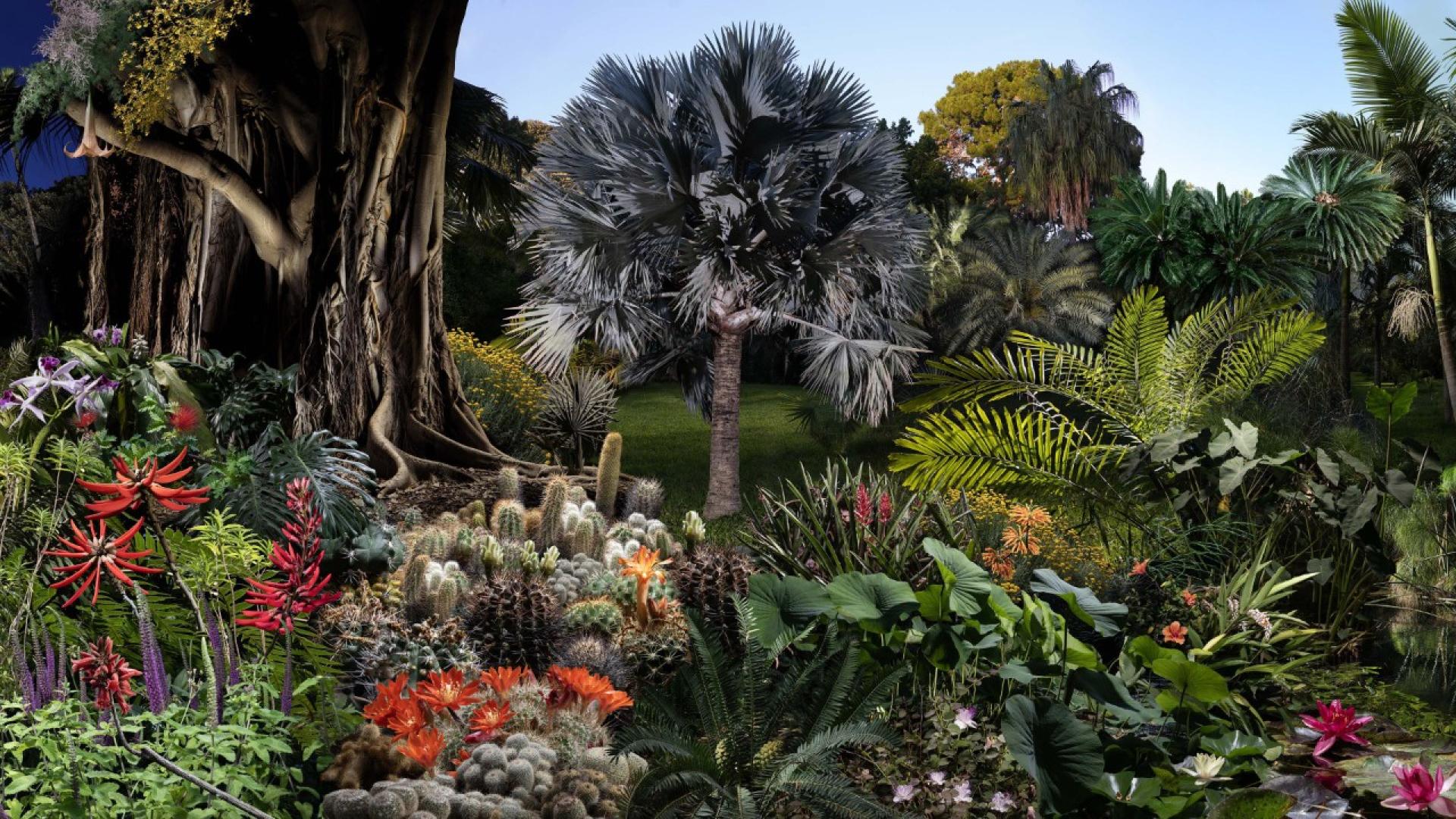Botanica Meraviglia
Arboreal amazement. An emotion envelops those who cross the threshold of the Botanical Garden of Palermo and immerse themselves in a suspended atmosphere, where scientific knowledge coexists with the poetry of life.
An open-air museum for over two centuries, this botanical institution has made possible the study, preservation, and dissemination of countless plant species in Sicily, Europe, and the Mediterranean.
Located between two rivers and under a temperate sky, its fertile soil has favored the growth of dracaena, bamboo, ficus, yucca, succulents, euphorbia, cycas, palms, and essential plants. Coming from tropical and subtropical regions, many of them have found an ideal habitat here, transforming the ten hectares of the garden into a place of extraordinary biodiversity.
Each plant tells a story of migration and adaptation, composing a landscape of memory and metamorphosis.
From the aerial roots of Ficus macrophylla f. columnaris, the Diorami ‘botanical expedition’ began in 2022 — a project commissioned by the Museum System of the University of Palermo and winner of PAC2021 –Plan for Contemporary Art – consisting of a widespread exhibition, a catalog, and a Public Program dedicated to an audience of adults and children. In a continuity of metamorphosis, the project is now rooted in Botanica Meraviglia, in the heart of the Botanical Garden, becoming part of its material and immaterial heritage.
In the heart of the Garden, a new root has been planted: the Casa del Pozzo, a late 19th-century tuff building, a vital place where water is collected to irrigate the living species of the entire garden. Today, the space becomes the green proscenium of an installation that overturns the proportions of reality. The work of photographer Alessandro Sala amplifies the vastness of the flora in a continuous dialogue between interior and exterior space, transforming the Casa del Pozzo into a perceptual threshold that accompanies the visitor's gaze beyond the visible.
The focal point of the composition is the Bismarckia nobilis, an elegant and sinuous palm tree with bluish-green foliage, native to Madagascar and introduced into the living collectionin the early 2000s. A young plant emerges from its base: present and future intertwine and grow together.
It is echoed by other emblematic presences: the Dracaena draco from the Canary Islands, from which the resin known as ‘dragon's blood’ is extracted, used in the past by indigenous peoples to paint their faces in purification rituals and for medicinal purposes; the coffee plant, now cultivated in open fields as a sign of adaptation to climate change; the Ceiba speciosa with its sculptural thorns; the towering trunks of the Washingtonia robusta; and the colorful blooms of water lilies and hibiscus.
The monumental Ficus macrophylla f. columnaris, planted in 1845, towers above. Beneath its branches hovers the genius loci imagined by Francesca Berardi, guiding a sound journey through Sicilian biodiversity: a story that intertwines science and myth, voices and music, extending the experience of the Casa del Pozzo to the dimension of listening.
The audio narration, with ambient sounds and original compositions by Gianni Gebbia, invites you to move like plant seeds—carried by the wind, the sea, migratory birds, insects, animals, and imagination—to discover seven stories of plants that symbolize resistance and rebirth.
The audio episodes include: the dwarf palm (Chamaerops humilis) of the Zingaro Nature Reserve; the varieties of Portuguese orange (Citrus sinensis) of the Pantelleria gardens; the almond tree (Prunus dulcis) of the Kolymbethra Garden; the carob trees (Ceratonia siliqua) of the Iblean countryside; wild herbs —sage (Salvia officinalis), thyme (Thymus vulgaris), rosemary (Rosmarinus officinalis) — of the Val di Noto; papyrus (Cyperus papyrus) from the waters of the Ciane River, the only occurrence on the European continent; and the Ilice di Carrinu, a monumental holm oak (Quercus ilex) from the Etna Park.
The leading voices are those of botanists, agronomists, intellectuals, and landscape activists — including Manlio Speciale, Rosario Schicchi, Paolo Inglese, Giuseppe Barbera, Mariangela Galante, Paolo Arena, Graziella Pavia, Salvatore Murana, Giuseppe Lo Pilato, Gianluca Pannocchietti, Paolino Uccello, Fabio Morreale, and Lavinia Lo Faro — committed to the protection of plants and the memory of places.
Two distillers used to extract essential oils from plants grown in the Giardino dei Semplici (Medicinal Garden) and other areas of the Botanical Garden introduce the new vocation of the Casa del Pozzo. The space is transformed into a place dedicated to olfactory experiences, workshops, and educational activities. Through the scents of memory, scientific knowledge intertwines with sensory and emotional experience: recognizing a plant also becomes remembering a place, a time, an emotion.
The botanical wonder that welcomes visitors is a way of thinking ecologically, in balance between reason and enchantment, where amazement becomes a form of knowledge.


